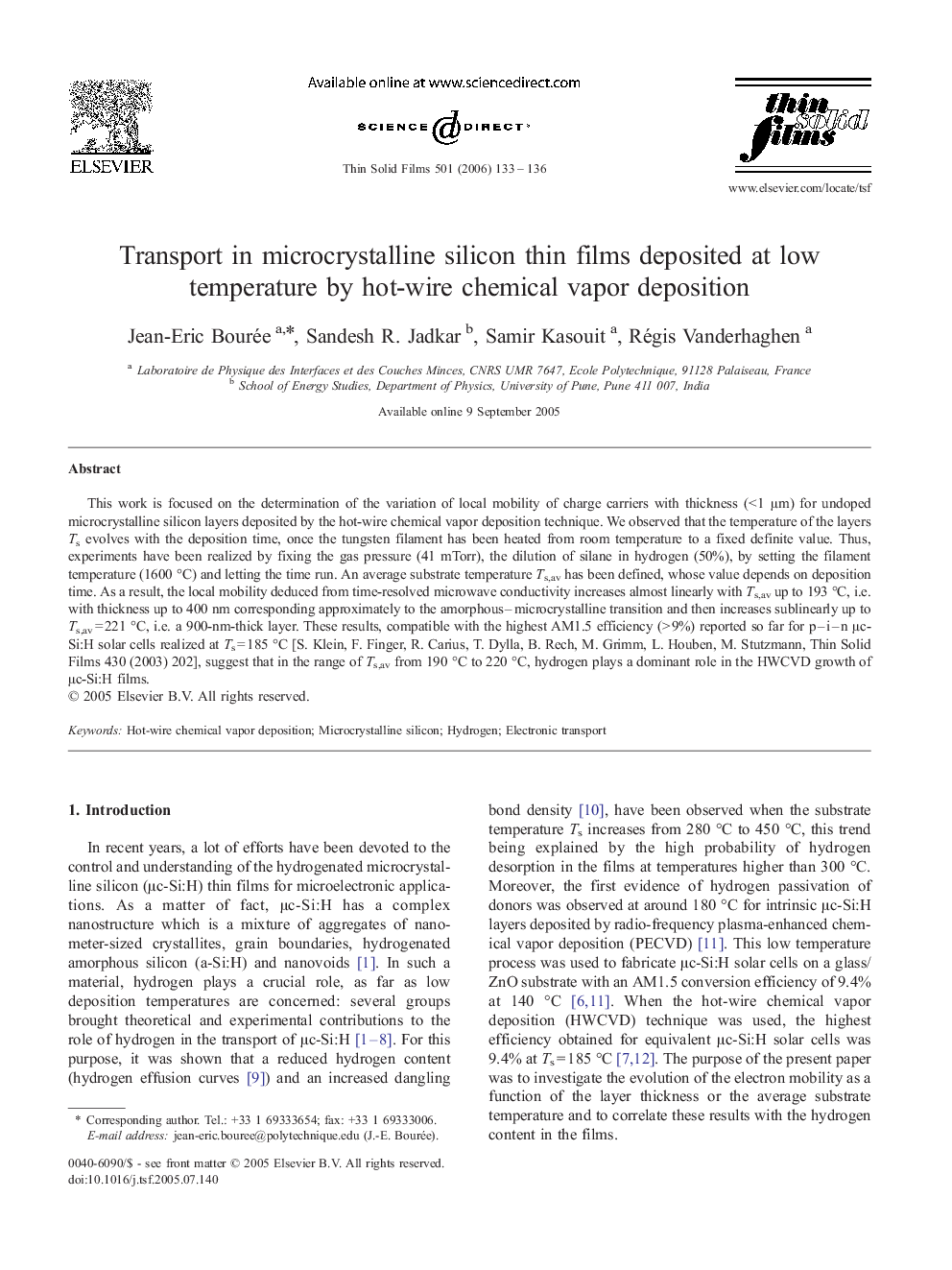| Article ID | Journal | Published Year | Pages | File Type |
|---|---|---|---|---|
| 1676177 | Thin Solid Films | 2006 | 4 Pages |
This work is focused on the determination of the variation of local mobility of charge carriers with thickness (< 1 μm) for undoped microcrystalline silicon layers deposited by the hot-wire chemical vapor deposition technique. We observed that the temperature of the layers Ts evolves with the deposition time, once the tungsten filament has been heated from room temperature to a fixed definite value. Thus, experiments have been realized by fixing the gas pressure (41 mTorr), the dilution of silane in hydrogen (50%), by setting the filament temperature (1600 °C) and letting the time run. An average substrate temperature Ts,av has been defined, whose value depends on deposition time. As a result, the local mobility deduced from time-resolved microwave conductivity increases almost linearly with Ts,av up to 193 °C, i.e. with thickness up to 400 nm corresponding approximately to the amorphous–microcrystalline transition and then increases sublinearly up to Ts,av = 221 °C, i.e. a 900-nm-thick layer. These results, compatible with the highest AM1.5 efficiency (> 9%) reported so far for p–i–n μc-Si:H solar cells realized at Ts = 185 °C [S. Klein, F. Finger, R. Carius, T. Dylla, B. Rech, M. Grimm, L. Houben, M. Stutzmann, Thin Solid Films 430 (2003) 202], suggest that in the range of Ts,av from 190 °C to 220 °C, hydrogen plays a dominant role in the HWCVD growth of μc-Si:H films.
